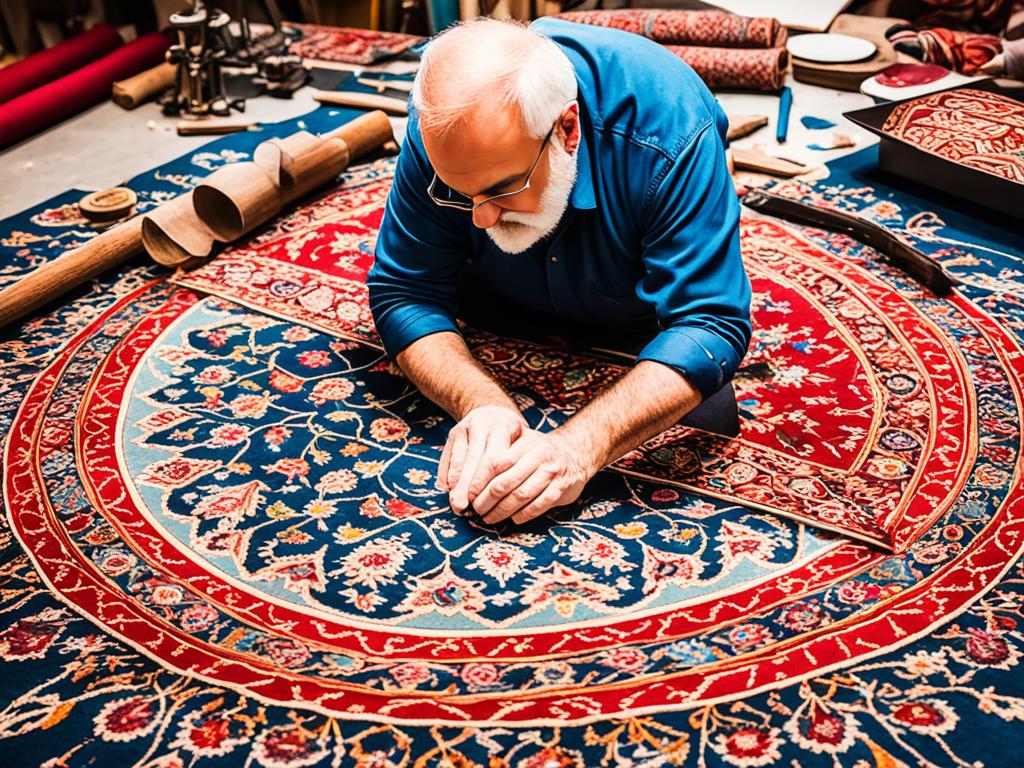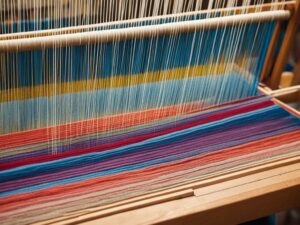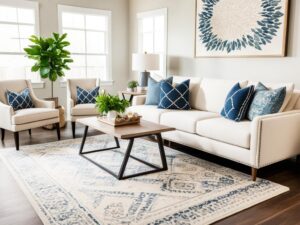Persian and Oriental rugs have a long and rich history that reflects the culture, traditions, and craftsmanship of their respective regions. The art of rug-making dates back thousands of years, with the world’s oldest known surviving rug, the Pazyryk rug, discovered in Siberia and dating back 2,500 years.
The Achaemenid Empire greatly influenced the evolution of Persian rugs, laying the foundation for the intricate designs and techniques seen today. Rug-making traditions also developed in ancient China, Central Asia, and during the Islamic Golden Age.
The Safavid Dynasty in Iran is a pivotal period known as the Golden Age of Persian rugs, where royal patronage transformed rug-making into a prestigious industry. The influence of the Ottoman Empire and Turkish rug production further contributed to the diversity and trade of Persian rugs.
Key Takeaways:
- The art of Persian rug-making dates back thousands of years.
- The Achaemenid Empire played a significant role in shaping Persian rug designs and techniques.
- The Safavid Dynasty in Iran is considered the Golden Age of Persian rugs.
- The Ottoman Empire and Turkish rug influence added diversity to Persian rug production.
- Understanding the origins of Persian rugs provides insights into their craftsmanship and cultural significance.
Early Rug-Making History
The early history of rug-making is captivating, with the discovery of the world’s oldest known rug, the Pazyryk rug, showcasing the skills of artisans from 2,500 years ago. This ancient masterpiece provides a glimpse into the rich tapestry of historical Persian rug production. During this time, the Achaemenid Empire played a crucial role in shaping the development of Persian rugs, with their exquisite craftsmanship and intricate patterns becoming defining characteristics of rugs from this period.
Around the same time, rug-making traditions in ancient China and Central Asia were also flourishing, influenced by local cultures and the exchange of ideas along the Silk Road. This cultural exchange contributed to the evolution of rug-making techniques and the emergence of new motifs and designs. The combination of intricate Persian patterns and the influence of other cultures resulted in a vibrant and diverse manufacturing process for Persian rugs.
The Islamic Golden Age further advanced the art of rug-making, with innovations in weaving techniques and the creation of new motifs and patterns. Persian rugs became highly sought-after luxury items, reflecting the artistic trends of the time. The manufacturing process evolved, incorporating intricate knotting techniques and the use of natural dyes, resulting in rugs of exceptional quality and beauty.
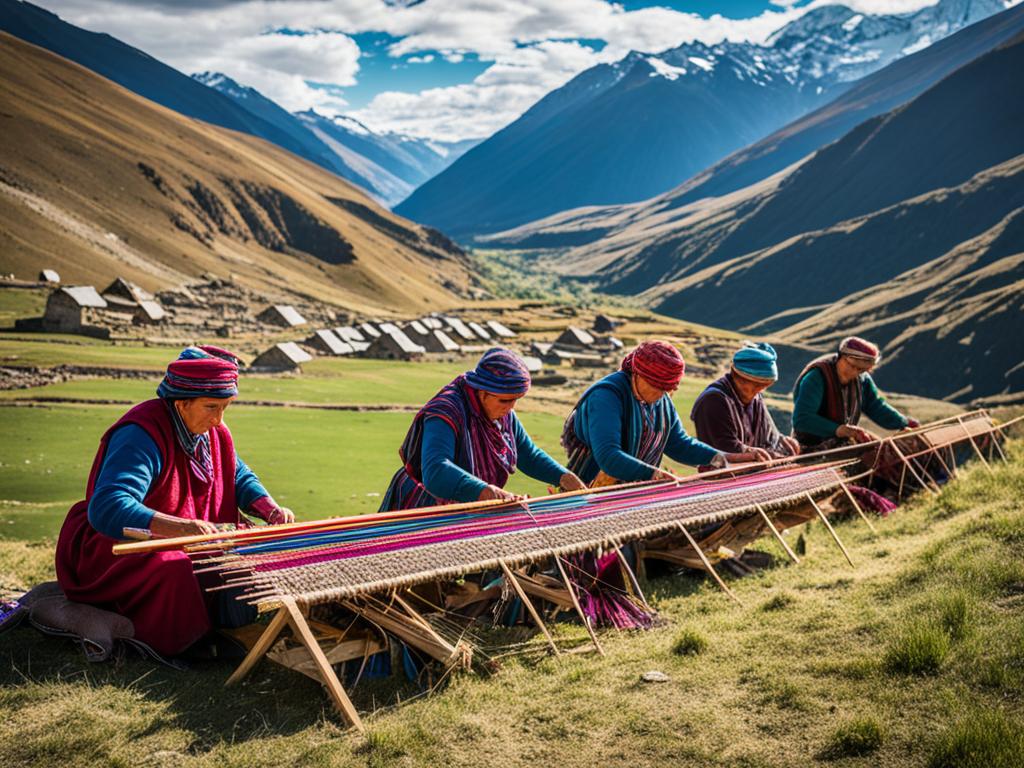
“Persian rugs are not simply decorative pieces; they are a testament to the rich cultural heritage and craftsmanship of the artisans who wove them.”
Spread of Rug-Making Throughout the Middle East and Beyond
The art of rug-making, originating from ancient times, quickly spread throughout the Middle East and beyond. As the Islamic world expanded through trade and conquest, rug-making traditions found their way into diverse regions, each with its distinct styles and influences.
Anatolia, a region known for its rich history and cultural heritage, developed its own unique rug-making traditions. Influenced by local cultures and the exchange of artistic ideas facilitated by trade networks, Anatolian rugs showcase a blend of intricate Persian designs and geometric patterns, creating visually captivating pieces.
The Caucasus region also embraced rug-making, producing rugs renowned for their bold colors and geometric motifs. The rugs from this region often feature vibrant hues, such as reds, blues, and yellows, and intricate patterns that represent the cultural symbolism of the area.
In North Africa, rug-making became an integral part of the Berber culture. Berber rugs are characterized by their simplistic yet captivating designs, primarily composed of repetitive geometric shapes and symbols. These rugs play a significant role in Berber traditions and serve as a reflection of their rich cultural heritage.
The dissemination of rug-making techniques, materials, and designs was facilitated by the Silk Road, an extensive network of trade routes connecting Asia, Europe, and Africa. As traders traveled along these ancient routes, they carried with them the artistry of rug-making, contributing to the spread and fusion of different rug-making traditions.
Understanding the spread of rug-making throughout the Middle East provides valuable insights into the diverse range of styles and patterns seen in Persian rugs today. It is a testament to the cross-cultural exchange and artistic collaboration that has shaped the world of rug-making.
Rug-Making Traditions in the Middle East and Beyond
| Region | Rug Characteristics |
|---|---|
| Anatolia | Blend of Persian designs and geometric patterns |
| The Caucasus | Bold colors and geometric motifs |
| North Africa | Simple geometric designs with cultural symbolism |
Safavid Dynasty and the Golden Age of Persian Rugs
The Safavid Dynasty in Iran marks a significant period in the history of Persian rugs, often referred to as the Golden Age of Persian rugs. Under the patronage of the Safavid rulers, particularly Shah Abbas I, rug-making transformed into a prestigious industry, with a focus on authentic Persian rug craftsmanship.
Cities such as Kerman and Kashan became renowned centers for rug production, attracting skilled artisans who dedicated themselves to creating rugs of exceptional beauty and quality. These rugs showcased intricate designs and meticulous attention to detail, setting the standard for historical Persian rug production.
One of the most iconic examples of Safavid artistry is the Ardabil Carpet. Created in the 16th century, this magnificent rug epitomizes the exquisite craftsmanship that defined the era. With its intricate arabesque patterns and exquisite color palette, the Ardabil Carpet remains a testament to the visionary work of Safavid artisans.
“The Safavid Dynasty’s patronage of the arts elevated Persian rugs to unprecedented heights, both as decorative pieces and valuable trade commodities.”
Another notable rug from this period is the Sheikh Safi Carpet, named after Sheikh Safi al-Din Ardabili, the ancestor of Shah Ismail I, the founder of the Safavid Dynasty. This remarkable rug showcases the high level of skill and artistry that characterized Safavid rug-making. The Sheikh Safi Carpet features vibrant colors, intricate floral motifs, and a highly detailed central medallion, exemplifying the exceptional aesthetics of Safavid craftsmanship.
The Safavid Dynasty’s influence extended beyond the borders of Iran, with Persian rugs becoming highly sought-after in international trade. The intricate designs, exquisite craftsmanship, and distinctive characteristics of Safavid rugs captivated collectors and traders worldwide.
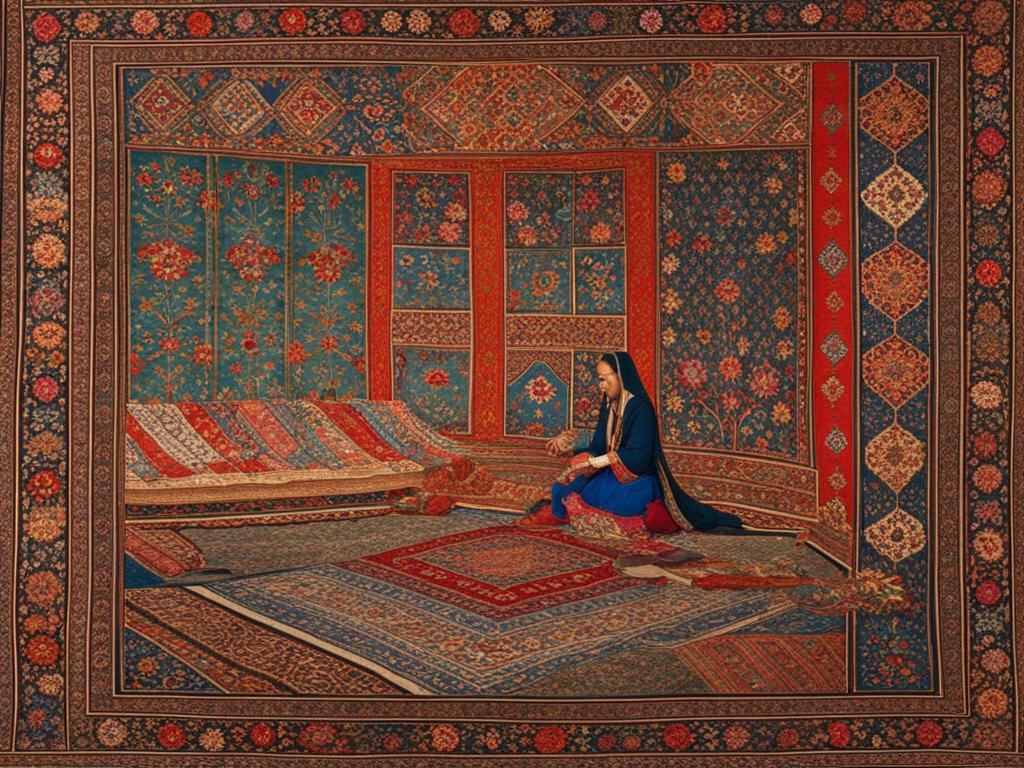
Ottoman Empire and Turkish Rug Influence
The Ottoman Empire played a significant role in shaping the origins of Persian carpets and the production of Iranian rugs. As the empire expanded its territories, it absorbed various cultures and artistic traditions, resulting in a diverse rug-making heritage.
Cities such as Usak, Bergama, and Konya became renowned rug-making centers, each contributing its own distinctive styles and patterns to the rich tapestry of Persian carpets. The influence of the Ottoman Empire can be seen in the unique characteristics of these rugs, which often feature a combination of geometric and curvilinear designs, vibrant colors, and a distinct knotting technique.
The Ottoman Empire’s impact on rug production and trade cannot be underestimated. The empire’s position as a major hub for economic and cultural exchange facilitated the spread of rug-making techniques, materials, and designs throughout the region.
“The Ottoman Empire’s absorption of various cultures and artistic traditions resulted in a diverse and vibrant rug-making heritage.” – Rug Expert, Hasan Basri
Understanding the influence of the Ottoman Empire on rug production provides valuable insights into the origins of Persian carpets. The fusion of Ottoman and Turkish artistic traditions with Persian craftsmanship contributed to the development of unique rug styles that continue to captivate collectors and enthusiasts today.
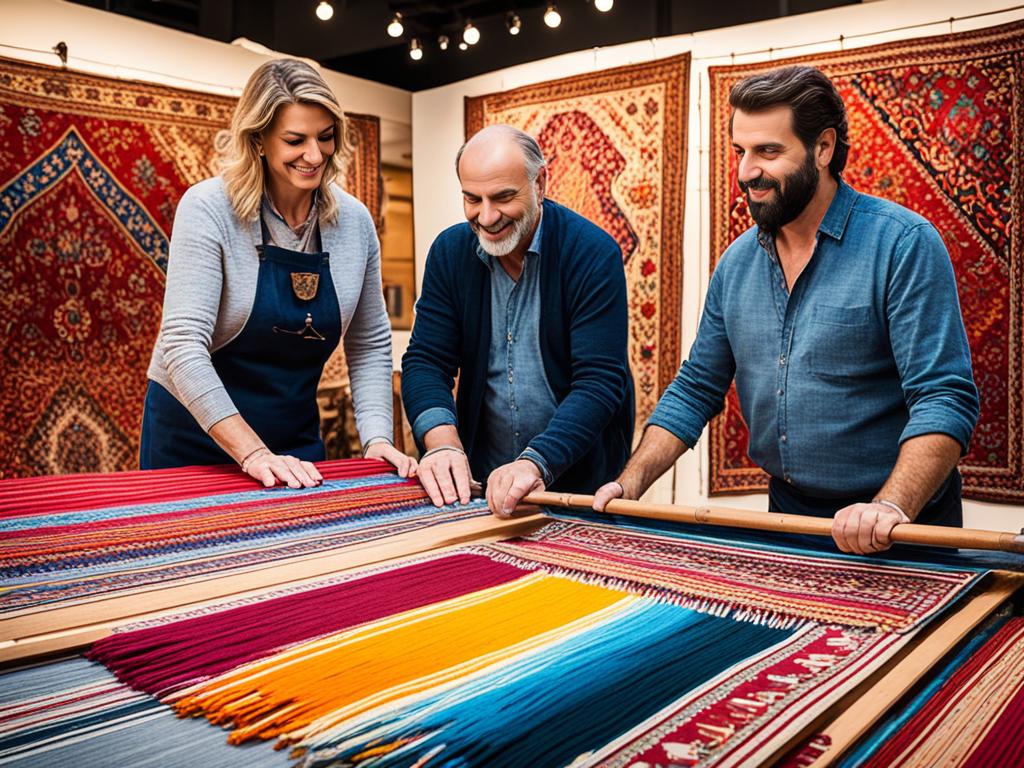
| Rug-Making Center | Distinctive Styles and Patterns |
|---|---|
| Usak | Geometric designs and vibrant colors |
| Bergama | Bold motifs and intricate border designs |
| Konya | Curvilinear patterns with floral motifs |
The table above showcases some of the iconic rug-making centers influenced by the Ottoman Empire and their distinctive styles and patterns.
Conclusion
Persian rugs have a rich and fascinating history that spans thousands of years. The art of rug-making originated in ancient times and has been shaped by the influence of various empires and dynasties. Throughout this journey, Persian rug-making has transformed into a revered craft known for its exceptional skill and attention to detail.
The intricate designs and craftsmanship of Persian rugs are a reflection of the cultural identity and traditions of their respective regions. Each rug tells a story of the people and the time in which it was created. From the vibrant colors and geometric patterns of Ottoman rugs to the ornate motifs and delicate weaving techniques of Safavid-era carpets, each Persian rug holds a unique significance.
Understanding the origins and history of Persian rugs adds a new level of appreciation for their beauty and artistry. For collectors and enthusiasts, delving into the rich tapestry of Persian rug-making allows for more informed choices when sourcing these exquisite carpets. Whether you are drawn to the traditional designs and techniques of Iranian rug production or the timeless elegance of Persian carpet weaving, these rugs are a testament to the enduring craftsmanship and cultural legacy of the region.
